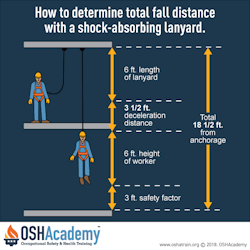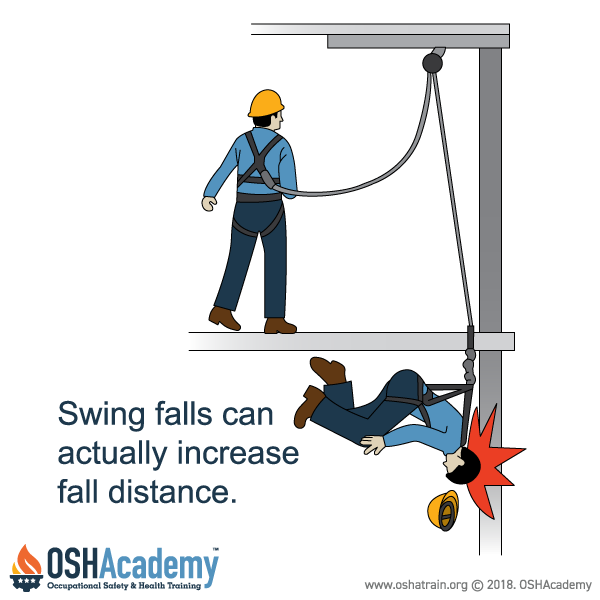Shock-Absorbing Lanyard
A shock absorber reduces the impact on a worker during fall arrest by extending up to 3.5 feet to absorb the arrest force.
OSHA rules limit the arrest force to 1,800 pounds but a shock-absorbing lanyard can reduce the force even more - to about 900 pounds.
Because a shock-absorbing lanyard extends up to 3.5 feet, it's critical that the lanyard stops the worker before the next lower level. Allow about 20 vertical feet between the worker's anchorage point and the level below the working surface. Always estimate the total distance of a possible fall before using a shock-absorbing lanyard.
Example: Lanyard length - free fall distance (6 feet) + deceleration distance (3.5 feet) + D-ring shift after the fall (1 foot) + Back D-ring height before the shift due to the fall (5 ft) + safety margin (3 feet) = 18.5 vertical feet from anchorage to lower level.
Never use a shock-absorbing lanyard if the shock absorber is even partially extended or if the lanyard has arrested a fall.
Beware of Swing Falls
Swing falls happen when you are not tied off at an anchorage point above the head or if you work at some distance from the anchorage point. They are hazardous because you can hit an object or a lower level during the pendulum motion.
The farther you move away from the anchorage, the farther you will fall and the greater your risk of swinging back into a hard object. If you use a self-retracting lanyard or lifeline, work below the anchorage to avoid a swing fall.
Knowledge Check Choose the best answer for the question.
5-8. A shock absorber reduces the impact force on a worker during fall arrest by extending up to _____.
You forgot to answer the question!


